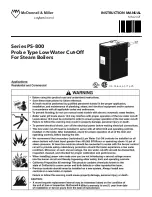
6.5.1
Classification
This classification is specified in more detail in the table in accordance
with .
Tab.9
Types of flue gas connections
Type
Version
Description
B
23
B
23P
(1)
Open
Without down-draught diverter.
Flue gas discharge via the roof.
Air from the installation area.
B
33
Open
Without down-draught diverter.
Common flue gas discharge via the roof (depression).
Flue gas discharge rinsed with air, air from the installation area (special construction).
C
13
Closed
Discharge in the outside wall.
Inlet opening for the air supply is in the same pressure zone as the discharge (e.g. a
combined outside wall feed-through).
C
33
Closed
Flue gas discharge via the roof.
Inlet opening for the air supply is in the same pressure zone as the discharge (e.g. a
concentric roof feed-through).
C
43
(2)
Closed/cascade
Joint air supply and flue gas discharge duct (CLV system):
Concentric (preferably).
Parallel (if concentric is not possible).
Overpressure cascade
C
53
Closed
Closed unit.
Separate air supply duct.
Separate flue gas discharge duct.
Discharging into different pressure areas.
C
63
Closed
This type of unit is supplied by the manufacturer without a supply and discharge sys
tem.
C
83
(3)
Closed
The appliance can be connected to what is known as a semi-CLV system (common flue
gas outlet and individual air supply).
C
93
(4)
Closed
Air supply and flue gas discharge duct in shaft or ducted:
Concentric.
Air supply from existing duct.
Flue gas discharge via the roof.
Inlet opening for the air supply is in the same pressure zone as the discharge.
(1) Also pressure class P1
(2) EN 15502-2-1: 0.5 mbar suction due to depression
(3) 4 mbar depression can occur
(4) See table for minimum dimensions of shaft or duct
Shaft dimensions
Fig.15
Minimum dimensions of shaft or duct
AD-3000330-01
□
D
Ø
D
6 Installation
7625116 - v.04 - 17012017
27
















































